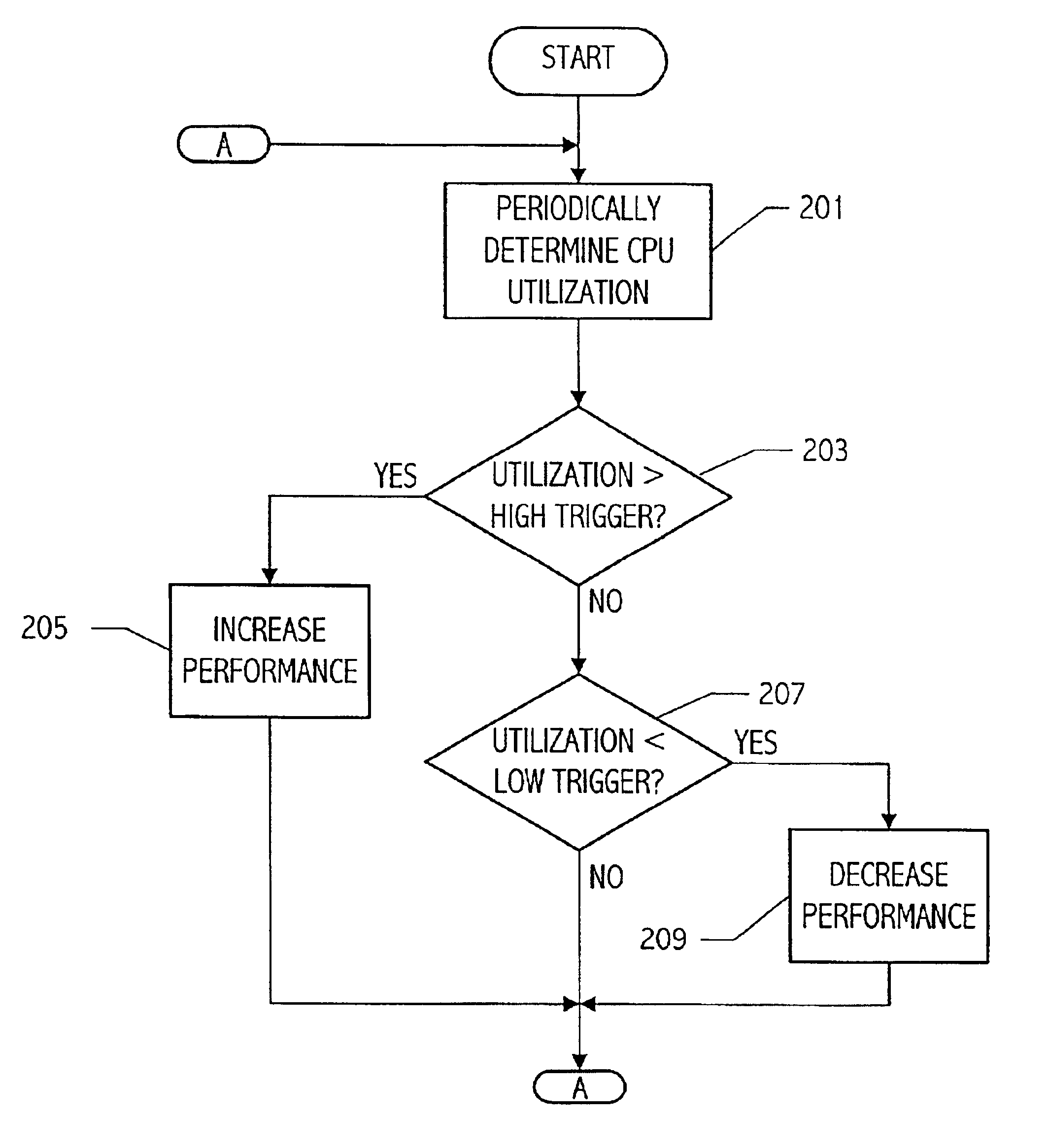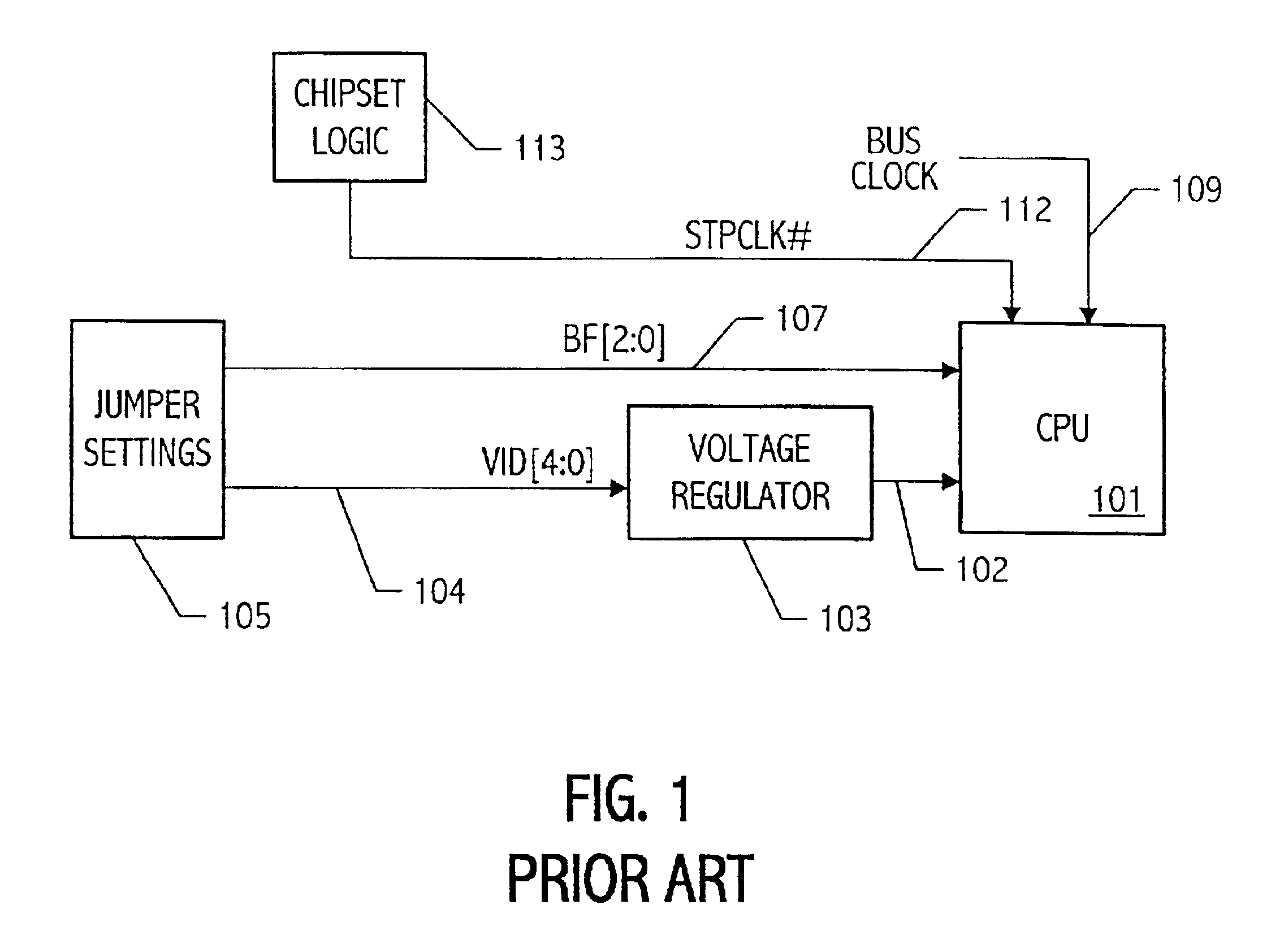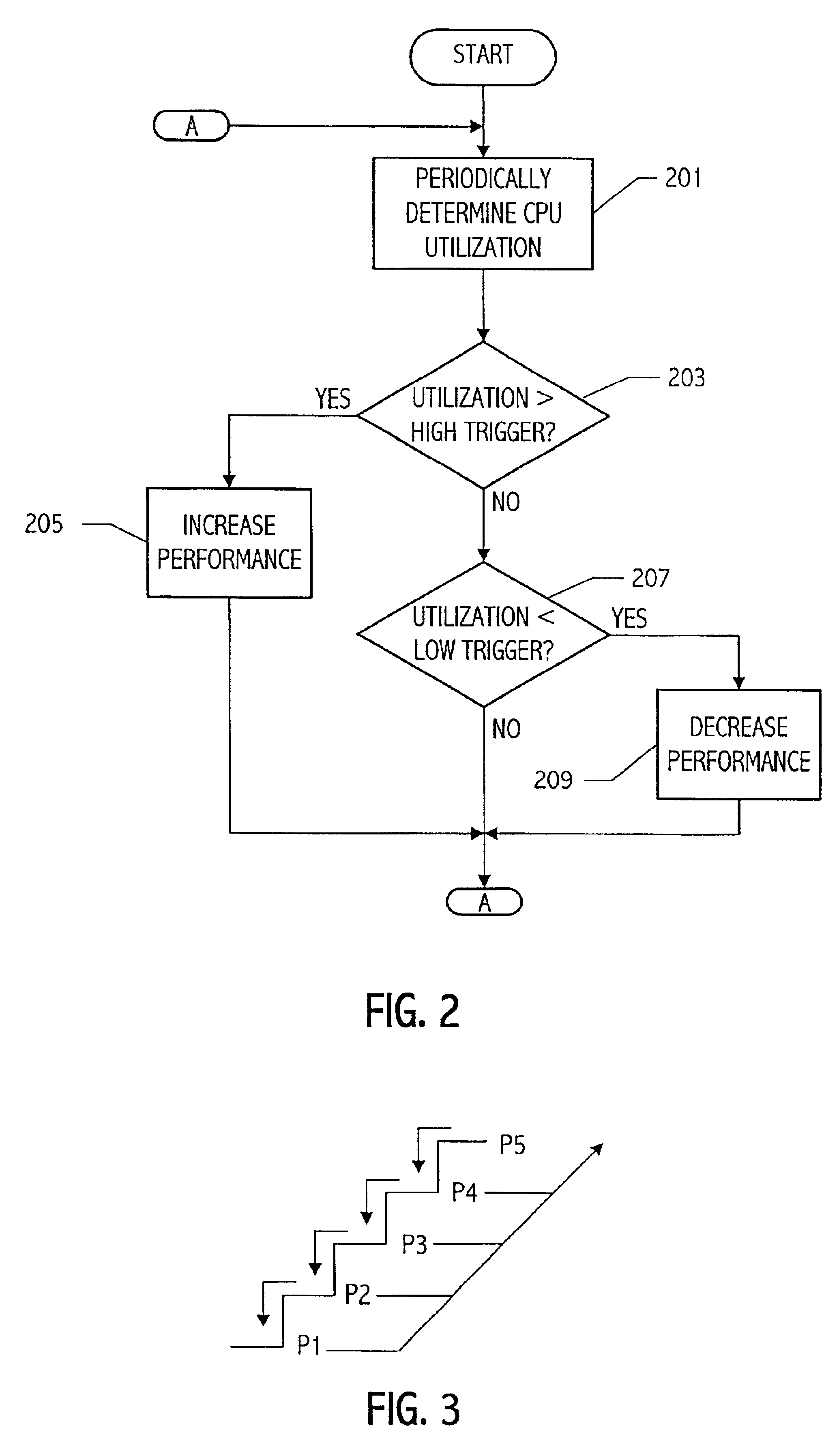CPU utilization measurement techniques for use in power management
a power management and measurement technology, applied in the field of computer systems, can solve the problems of reducing the ability of the mobile computer system to safely dissipate power, limiting the ability of the mobile computer system to and low supply voltage that can achieve the rated clock speed
- Summary
- Abstract
- Description
- Claims
- Application Information
AI Technical Summary
Benefits of technology
Problems solved by technology
Method used
Image
Examples
Embodiment Construction
A computer system according to one embodiment of the invention has a plurality of processor performance states, generally based on unique voltage / frequency pairs. A power management control function in the computer system periodically determines the utilization level of the processor, i.e., how much of the available processor resources are being utilized, and selects a next performance state that is appropriate for the utilization level. Referring to FIG. 2, a flow diagram illustrates at a high level, operation of an embodiment of a power management function utilized to provide the requisite power management control. The current utilization is periodically determined in 201. That current utilization is then compared to a high threshold level, e.g., 80% of processing resources, in 203. If the utilization level is above the high threshold level, indicating that processor resources are being utilized at a level above 80%, the power management control function increases the performance ...
PUM
 Login to View More
Login to View More Abstract
Description
Claims
Application Information
 Login to View More
Login to View More - R&D
- Intellectual Property
- Life Sciences
- Materials
- Tech Scout
- Unparalleled Data Quality
- Higher Quality Content
- 60% Fewer Hallucinations
Browse by: Latest US Patents, China's latest patents, Technical Efficacy Thesaurus, Application Domain, Technology Topic, Popular Technical Reports.
© 2025 PatSnap. All rights reserved.Legal|Privacy policy|Modern Slavery Act Transparency Statement|Sitemap|About US| Contact US: help@patsnap.com



